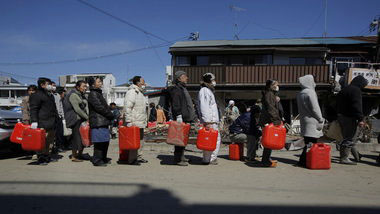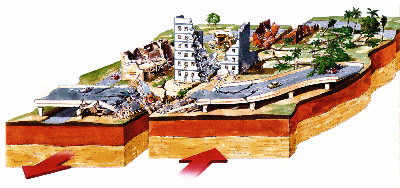Via oregonlive.com

Oregon experts studying Japan’s recent earthquake damage expect that when — not if — a similar quake hits the Northwest, civilization as we know it will pretty much end for weeks or months.
Collapse-prone schools containing 306,000 Oregon children could shake apart. Portland’s Fremont Bridge and other spans and their approaches will likely fall. Landslides will probably bury highways, cutting off Oregon’s coast. Towers suspending high-voltage lines over the Columbia River may topple, blocking ships needed for emergency supplies.
The experts predict lengthy blackouts, food shortages and fuel outages. They expect tanks and pipes to rupture, leaking petroleum into the Columbia and Willamette rivers. They expect firefighters battling numerous blazes to be slowed by collapsed fire stations, broken water pipes and severed communications.
Members of a team traveling to Japan next month say damage from the March 11 magnitude-9 quake there was worse than reported amid the tsunami and nuclear calamities, and would be far more disastrous in Oregon given a lack of preparation.
They say an equally strong quake expected in the Cascadia subduction zone off Oregon will kill thousands and cause the most damage if it occurs in winter, when soil is saturated, and on a weekday, when people are at work.
“I can’t even imagine how horrible it would be if we had kids in school or people on bridges,” said Allison Pyrch, a senior geotechnical engineer in Portland at Shannon & Wilson Inc., a consulting firm. “The majority of our transportation system will be crippled. We’re going to have trouble with electricity, water, wastewater and natural gas for weeks if not months.”
No one can say when a strong Cascadia quake will occur, but Pyrch — one of several experts departing June 11 for Japan on a trip arranged by the American Society of Civil Engineers — notes that an earthquake above magnitude 8 occurs on the Cascadia subduction zone every 240 years, on average. “We’re at 311,” she said, referring to a Cascadia quake and tsunami that occurred Jan. 26, 1700.
Pyrch and other experts say they’re not alarmists. They say Oregonians could reduce impacts by bolting houses to foundations, assembling emergency kits and buying non-sparking wrenches for turning off natural gas.
But the experts voice frustration over a lack of public understanding and official action since the mid-1980s, when engineers began realizing that the Northwest was at risk. Research determined that earthquakes and tsunamis have occurred through history as one of the tectonic plates off Oregon thrusts beneath another.
Team members hope Japan’s earthquake, tsunami and nuclear disaster, which left about 28,000 dead or missing, will prompt new urgency in the Northwest.
BPA getting ready
“We’re definitely not ready for that earthquake,” said Leon Kempner, the Bonneville Power Administration’s principal structural engineer.
But the BPA and other government agencies are taking steps. The power agency is in the process of anchoring all of its more than 300 high-voltage transformers west of the Cascades in Oregon and Washington, for more than $4 million.
Kempner is concerned that earthquake shaking could liquefy land beneath high-voltage transmission towers, toppling them and yanking down more towers and dropping cables into the Columbia and Willamette.
Twenty dams operated by the U.S. Army Corps of Engineers in Oregon and southwest Washington also raise questions. “We are confident that they wouldn’t fail in a catastrophic way,” said Amy Echols, an Army Corps public affairs specialist, adding that cracks or misalignments could occur.
Asked to quantify the probability of a catastrophic dam failure, Echols said: “I don’t think any of our engineers would want to pull that out, because that could become quite alarming in many ways.”
Chris Goldfinger, an Oregon State University marine geology professor, happened to be in Japan on March 11 and experienced the magnitude-9 quake, which cut short an earthquake conference he was attending.
Goldfinger said a similar quake off Oregon would generate a tsunami 50 to 65 feet high, inundating coastal areas. Low-lying areas such as those around Tillamook Bay will drop 3 to 6 feet permanently, remaining underwater as areas did in Japan, he said.
Coast could be isolated
Yumei Wang, Oregon Department of Geology and Mineral Industries geohazards team leader, said that for all the Japanese preparation, Sendai only last week finished restoring service to about 400,000 people who lost natural gas.
“We’re confident that a magnitude-9 earthquake will hit Oregon,” said Wang, who will help lead the team to Japan. She expects coastal U.S. 101 will be inoperable and highways between Interstate 5 and the coast will be blocked by landslides.
The Astoria Bridge could fail, blocking the Columbia shipping channel, which itself could cave in underwater, said Nason McCullough, a CH2M Hill geotechnical engineer in Corvallis also on the team.
“Each of these — Cannon Beach, Newport, Waldport, Florence, Coos Bay — are probably going to be their own isolated areas,” McCullough said. “If you lost the Newport Bridge, it’s going to be difficult to get into that port.”




